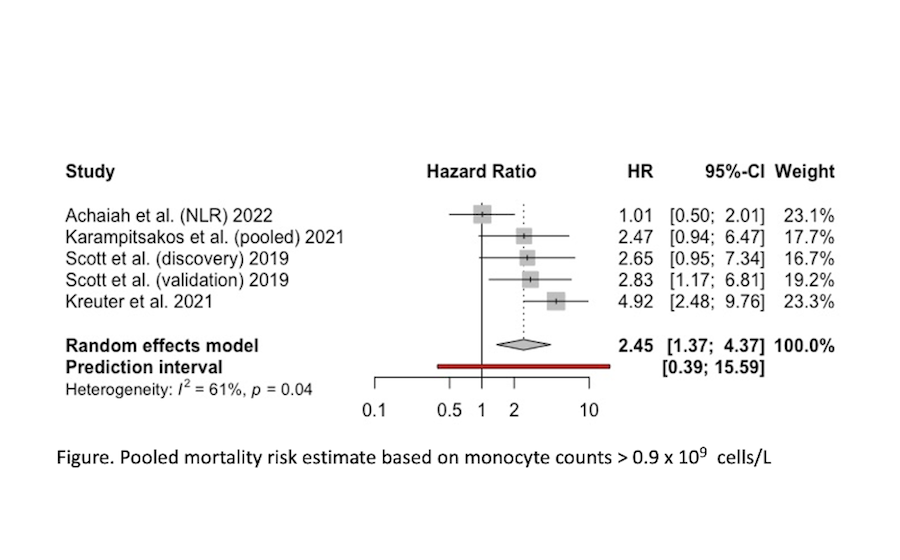Abstract
Rationale: Peripheral blood monocytes have been associated with increased risk of mortality and disease progression in patients with interstitial lung disease (ILD). However, studies are limited by variable biomarker thresholds, heterogeneity in study populations and analytic approach. The objective of this study was to characterize the relationship between monocyte counts, survival, and disease progression in ILD. Methods: Electronic database searches were conducted in MEDLINE, Embase, SCOPUS, and Web of Science. Two reviewers screened abstracts and extracted data from full texts. Pooled estimates (hazard ratios (HR)) of monocyte count >0.9-1x10^9 cells/L with mortality risk and disease progression were calculated using random effects models, with heterogeneity assessed. Results: A total of 3279 abstracts were identified, with six studies included that reported HRs for mortality. The pooled unadjusted HR (Figure) was 2.45 (95%CI 1.37-4.37, p=0.04, I^2=61%), and in adjusted models was 1.87 (95%CI 1.09-3.20, p=0.01, I^2=73%). The pooled HR for disease progression, including unadjusted and adjusted models was 1.83 (95%CI 1.40-2.39, p=0.24, I^2=28). Conclusions: Elevated monocyte counts are associated with higher risk of mortality and disease progression in ILD, based on few studies. Future work should replicate these findings and characterize the mechanisms underlying this relationship.